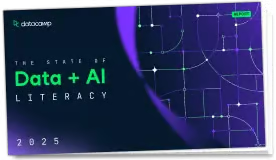
read.clipboard), or taken as output from the factor2cluster function.cluster.cor(keys, r.mat, correct = TRUE,digits=2)score.items. A typical use in the SAPA project is to form item composites by clustering or factoring (see ICLUST, principal), extract the clusters from these results (factor2cluster), and then form the composite correlation matrix using cluster.cor. The variables in this reduced matrix may then be used in multiple R procedures using mat.regress.
The original correlation is pre and post multiplied by the (transpose) of the keys matrix.
factor2cluster, mat.regress, alpha.scale, score.itemsdata(attitude)
keys <- matrix(c(1,1,1,0,0,0,0,
0,0,0,1,1,1,1),ncol=2)
colnames(keys) <- c("first","second")
r.mat <- cor(attitude)
cluster.cor(keys,r.mat)
#$cor
# first second
#first 1.0 0.6
#second 0.6 1.0
#
#$sd
# first second
# 2.57 3.01
#
#$corrected
# first second
#first 0.82 0.77
#second 0.60 0.74
#
#$size
# first second
# 3 4
## The function is currently defined as
function(keys,r.mat,correct=TRUE) { #function to extract clusters according to the key vector
#default is to correct for attenuation and show this above the diagonal
#find the correlation matrix of scales made up of items defined in a keys matrix
#(e.g., extracted by factor2cluster)
#takes as input the keys matrix as well as a correlation matrix of all the items
if(!is.matrix(keys)) keys <- as.matrix(keys)
#keys are sometimes a data frame - must be a matrix
covar <- t(keys) %*% r.mat %*% keys #matrix algebra is our friend
var <- diag(covar)
sd.inv <- 1/sqrt(var)
ident.sd <- diag(sd.inv,ncol = length(sd.inv))
cluster.correl <- ident.sd %*% covar %*% ident.sd
key.var <- diag(t(keys) %*% keys)
key.alpha <- ((var-key.var)/var)*(key.var/(key.var-1))
key.alpha[is.nan(key.alpha)] <- 1 #if only 1 variable to the cluster, then alpha is undefined
key.alpha[!is.finite(key.alpha)] <- 1
colnames(cluster.correl) <- names(key.alpha)
rownames(cluster.correl) <- names(key.alpha)
if (correct) {cluster.corrected <- correct.cor(cluster.correl,t(key.alpha))
return(list(cor=cluster.correl,sd=sqrt(var),corrected= cluster.corrected,size=key.var))
} #correct for attenuation
else {
return(list(cor=cluster.correl,sd=sqrt(var),alpha=key.alpha,size=key.var))}
}Run the code above in your browser using DataLab